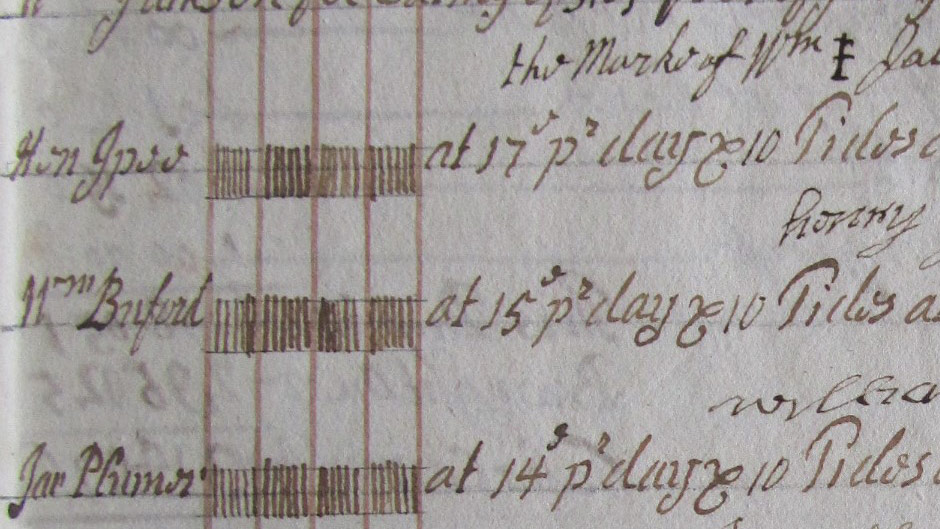We’re all familiar with the idea of 9-5 working and the benefits of flexi time, but adapting work hours is not a new thing. For centuries the Rochester Bridge Trust has employed people to work by the tide.
Look down to the river at different times of day and it’s clear the height of the water changes – often quite markedly. This is because the River Medway at Rochester is tidal.
When the tide is in, or high, the lower parts of the bridge are completely submerged and inaccessible, so any maintenance work needed has to be carried out at low tide.
In medieval times maintenance of the then bridge’s foundations was an ongoing process carried out by a team of ‘tidemen’. Using two pieces of apparatus called the gin and ram, their role was to drive timber piles into the riverbed when the water level was low to create a protective ring around the piers (the “legs” of the bridge) to defend them against the relentless ebb and flow of the tides.
Rather than getting a daily wage, these labourers were paid by the tide they worked. It was a practice that continued into the 19th century.
Fast forward to today, and – no surprise! – we still can’t control the tides, so we have to work around them.
One element of the Rochester Bridge Refurbishment Project has been maintenance of the river wall. To enable this to be carried out safely and efficiently we built a complex scaffold structure from the Esplanade, over the balustrade, down to the riverbed.
Not only did this provide a secure platform for the conservation team from PAYE Stonework to operate from, it also meant they could work on the wall full-time. Depending on the height of the tide, they could move up and down the scaffolding’s four floors as needed.
Rochester was a stopping point on the historic pilgrimage route from London to the shrine of St Thomas à Becket in Canterbury. It would be nice to think that medieval writer Geoffrey Chaucer, author of the Canterbury Tales, was thinking of us when he warned that time and tide wait for no man.




